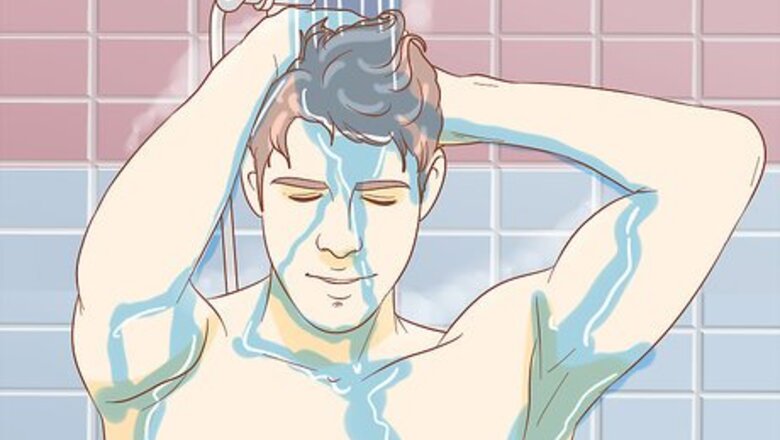
views
Washing Your Hair with Over-the-Counter Shampoo
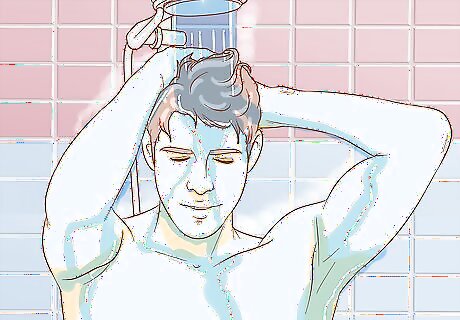
Wet your scalp and hair thoroughly. Get into the shower or bend over a bathtub or sink. Wet your hair and scalp like you normally would before shampooing your hair. You can use warm or cool water depending on what you prefer. You may want to opt for an over-the-counter shampoo if you have dandruff.
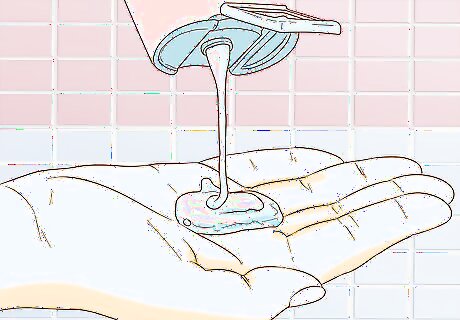
Apply enough shampoo to wash your hair. If you have short or thin hair, use about 1 teaspoon (5 mL) of shampoo. If you have long or thick hair, use about 1 tablespoon (15 mL) of shampoo. Pour the shampoo into the palm of your hand and then apply it directly to your scalp. Don’t worry about getting exactly the right amount of shampoo! If you end up with a little more than you need, it won’t matter. If you dispense too little shampoo into your hand, you can always add more.
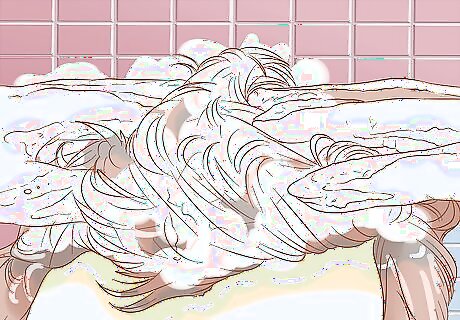
Use your fingertips to work the shampoo into a lather. Concentrate on massaging the shampoo into your scalp since this is what the medicine needs to target. Massage your scalp with your fingertips by moving them in circles and then work the shampoo down the length of your hair. Continue pressing your fingertips against your scalp as you move them around and work the shampoo into a lather. This should only take about 15 seconds. Avoid scratching your scalp with your nails as you work the shampoo into it. Only use the tips of your fingers. If it’s hard to work up a lather, add a little more shampoo to your hand and work it into your hair.
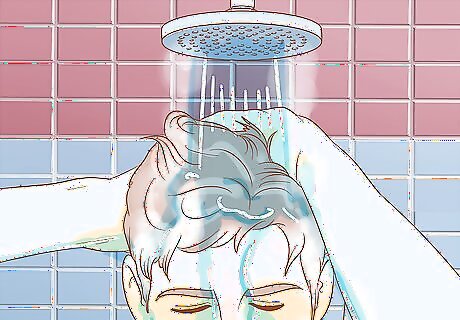
Rinse the shampoo out of your hair with running water. After lathering the shampoo over your entire scalp and hair, use the showerhead or a faucet to rinse away the shampoo. Hold your head under the running water for about 30 seconds.
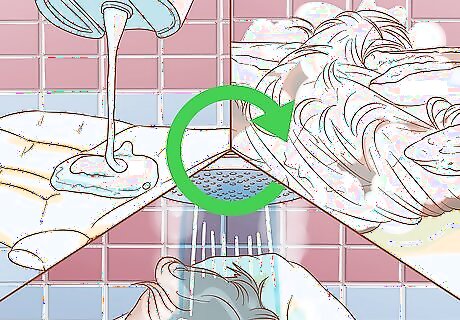
Repeat the process 1 time. Apply the shampoo as you did before and lather it up on your scalp and in your hair again. Then, rinse your hair thoroughly to get all of the shampoo out of it. You only need to repeat the application 1 time to get the full effects of it. Use conditioner, dry, and style your hair as usual after you are finished shampooing.
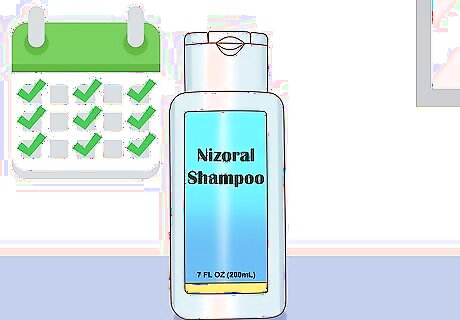
Use the shampoo 3 to 4 times weekly for 2 to 4 weeks. Over-the-counter Nizoral is gentle enough to use on your hair and scalp up to 4 times per week for as long as 4 weeks. However, you may stop using the shampoo whenever you stop noticing dandruff. Make sure that you use it at least 3 times per week for at least 2 weeks. Tip: Speak to your doctor or pharmacist if you are unsure about how long to use over-the-counter Nizoral shampoo or if you encounter any problems.
Applying Prescription-Strength Shampoo
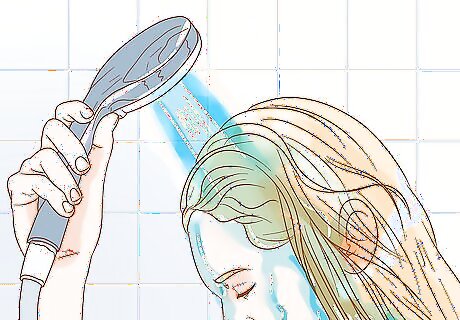
Pour a small amount of water onto your scalp to make it damp. Get into the shower or bathtub or lean over a sink or bathtub. Wet your hair and scalp as you normally would to shampoo it. You can use warm or cool water. You may need a prescription-strength shampoo if you have a fungal infection on your scalp. Use clarifying shampoo first if your hair is oily prior to applying the prescription shampoo. This deep cleans your hair prior to application and helps the treatment penetrate your hair effectively.
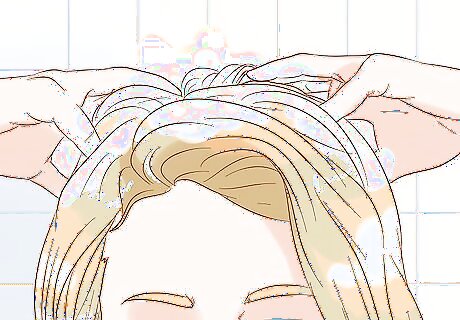
Apply the shampoo to the affected area of your scalp. Use enough shampoo to cover the affected area plus a 1 to 2 in (2.5 to 5.1 cm) radius around it on your scalp and through your hair. This will be about 1 teaspoon (5 mL) for short or thin hair or 1 tablespoon (15 mL) for long or thick hair. It’s okay if you dispense a little more or less than you need. You can work in the extra shampoo or add some more if you didn’t dispense enough.
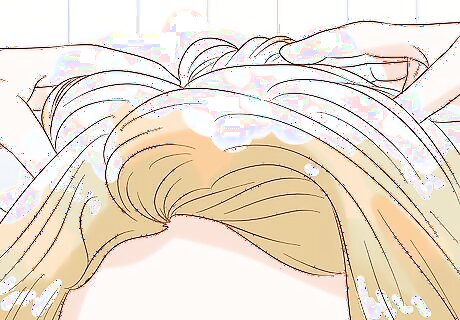
Work the shampoo into a lather with your fingertips. Press your fingers into your scalp and move them in small circles over the affected area of your scalp. Continue doing this until the shampoo is sudsy all over your scalp and then work the shampoo through your hair. Be careful not to scratch your head with your fingernails as you work the shampoo into a lather.

Leave the shampoo on your scalp for 5 minutes. After you have finished lathering the shampoo, let it sit for 5 minutes. Nizoral is a broad spectrum antifungal that helps to inhibit the growth of a wide range of fungal infections. Letting it sit on your scalp will give the medicine plenty of time to work. You can set a timer or just estimate the time. It’s okay if the shampoo sits on your head for 1 to 2 minutes more or less than suggested.
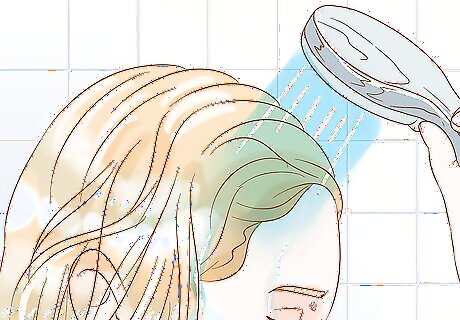
Rinse away the shampoo with running water. When the time is up, rinse the shampoo out of your hair with running water. You can use warm or cool water. Keep rinsing your hair and scalp until the shampoo is completely gone. You may apply conditioner to your hair if desired. Dry and style your hair as you normally would after you finish rinsing out the shampoo and conditioner. Nizoral shampoo will cleanse your hair as it medicates your scalp. Wait for at least 1 day to shampoo your hair with a different shampoo. Warning: Do not repeat the application or use another shampoo after! Prescription-strength Nizoral shampoo only requires 1 use, and following it with another shampoo will wash away some of the medicine.
Using the Shampoo Safely
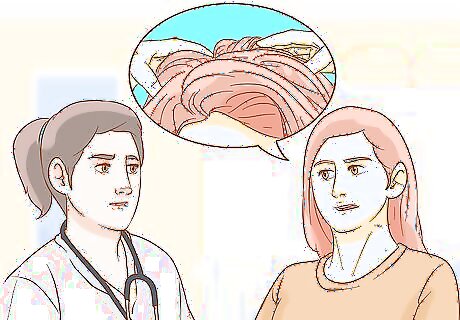
Tell your doctor about any allergies you have. Read the ingredients list on the package to check for anything that you might be allergic to, especially the product’s main ingredients. However, if you have ever had an allergic reaction to any of the ingredients on the Nizoral label, tell your doctor. It is likely that you will have a reaction to Nizoral if you have reacted to any of its ingredients before. In this case, your doctor may recommend an alternative treatment. The active ingredient in Nizoral is ketoconazole, which is often found in other antifungal medicines. The shampoo also contains sulfites, which are often found in shampoo, body wash, detergents, and other types of soaps.

Get permission from your doctor if you are pregnant or breastfeeding. As with any medicine, it is important to inform your doctor if you are pregnant or breastfeeding. They may suggest an alternative treatment or they may determine that it is safe for you to use Nizoral. Safety Precaution: Nizoral is meant for adults and children over the age of 12. If you have a child under the age of 12 that needs this treatment, ask the child’s pediatrician first.
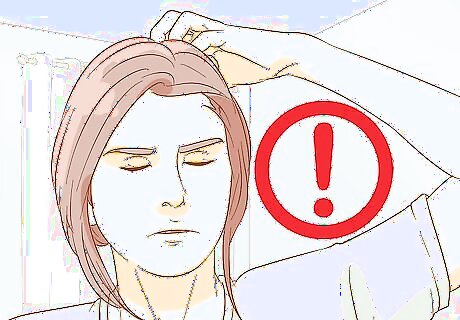
Watch for common side effects. It is possible that you will experience some side effects while you are using Nizoral shampoo. These side effects may go away after you stop using Nizoral. However, if the side effects are ongoing or if they bother you, tell your doctor. Some common side effects include: Blisters Changes to your hair texture Itchy skin Dry skin Dry or oily hair or scalp Stinging or irritation where you applied the shampoo
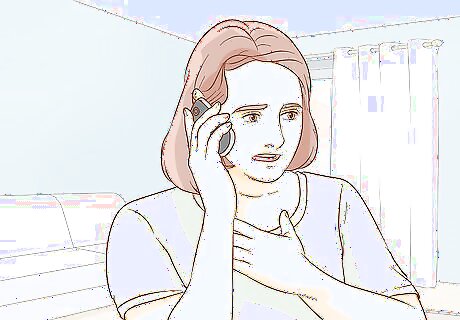
Call your doctor immediately in the event of serious side effects. Some side effects of Nizoral can be due to a serious allergic reaction and may require immediate medical treatment. Call your doctor or visit an emergency room right away if you have any of the following symptoms: Rash Hives Swelling, redness, or pain Difficulty breathing















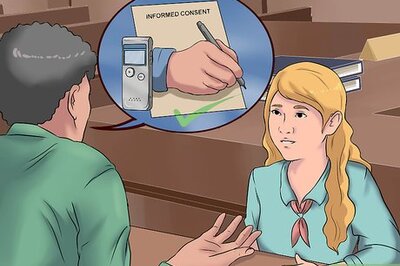
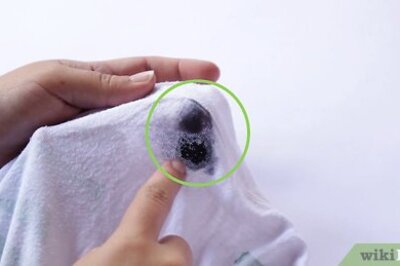


Comments
0 comment